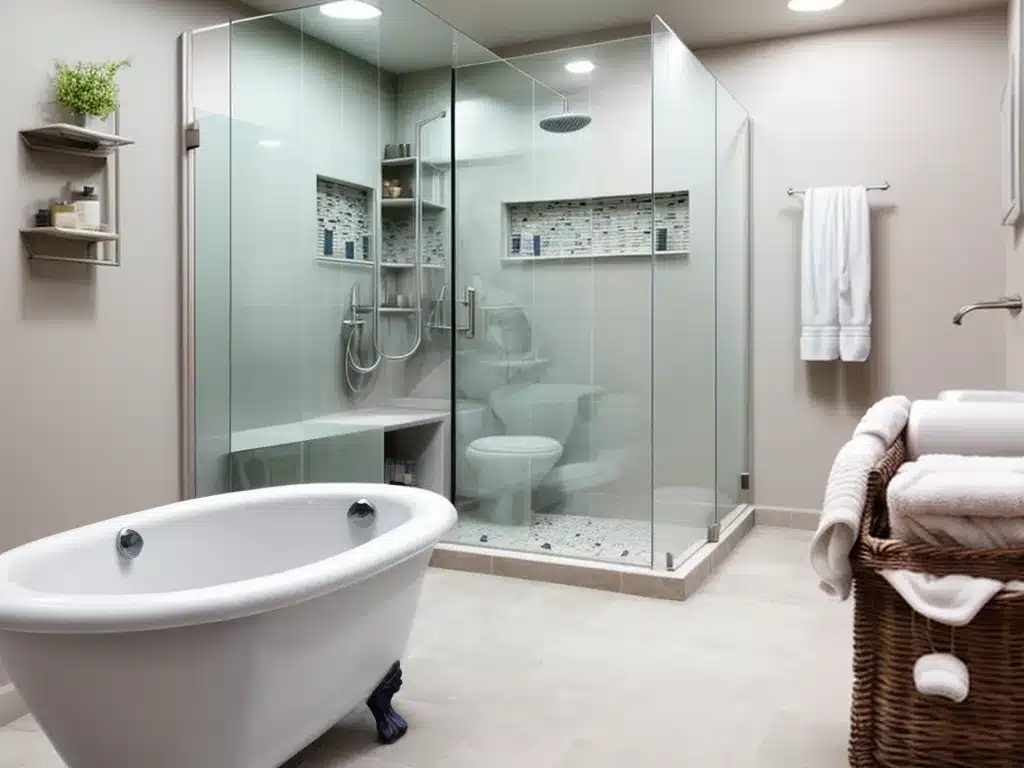As spring arrives and temperatures start to rise, mildew can become a problem in bathrooms. Mildew thrives in damp environments and can quickly take over tile grout, caulk, shower curtains, and other surfaces. Getting rid of existing mildew and preventing it from returning takes some work, but is doable with the right cleaning strategies.
Use Bleach to Remove Existing Mildew
Bleach is the most effective way to kill and remove existing mildew from bathroom surfaces. Here are some tips for tackling mildew with bleach:
-
Put on gloves and open windows – Bleach can irritate skin and eyes and has strong fumes. Protect yourself and air out the room.
-
Mix 1 part bleach to 4 parts water – This diluted bleach solution is strong enough to kill mildew but won’t damage most bathroom surfaces.
-
Apply to mildewed areas and let sit 10 minutes – This contact time allows the bleach to work. Reapply if needed.
-
Scrub with a stiff brush or sponge – This mechanical action helps remove staining and debris.
-
Rinse thoroughly and wipe dry – Bleach residue left behind can damage some surfaces.
Bleach successfully removed the black mildew stains around my shower grout and on the shower curtains. Just remember to never mix bleach with other cleaners, especially those containing ammonia, due to hazardous chemical reactions.
Use Baking Soda and Vinegar to Prevent Mildew Growth
To help prevent mildew from returning, I used a non-toxic disinfecting combo of baking soda and vinegar after deep cleaning with bleach. Here’s how:
-
Make a paste with 3 parts baking soda to 1 part water – Spread this thick paste onto grout lines and other prone areas.
-
Spray full-strength white vinegar over the paste – The acidic vinegar reacts with the alkaline baking soda to fizz and disinfect.
-
Let sit 5-10 minutes before scrubbing and rinsing – This allows time for the reaction to do its work.
I found the baking soda/vinegar treatment helpful for keeping the grout lines free of discoloration between full bleach cleanings. The natural ingredients help inhibit mold and bacteria growth.
Improve Ventilation and Air Flow
Lack of proper ventilation and moisture buildup are two of the biggest triggers for mildew growth. Here are some tips to improve air circulation:
-
Run the exhaust fan during and after showering – This helps remove humid air. Let the fan run for 30 minutes after to fully clear moisture.
-
Keep the bathroom door open when not in use – Allowing air flow from the rest of the home helps the bathroom dry out faster.
-
Check for and fix leaks – Drips from the faucet or pipes raise humidity. Repair any leaks promptly.
-
Consider installing a small dehumidifier – This appliance can control humidity levels and condensation.
Since improving the ventilation, I’ve noticed much less moisture buildup on bathroom walls and surfaces. Proper air flow is key for preventing mildew growth.
Use Preventative Cleaning Products
In addition to regular cleaning, certain products can help prevent mildew growth between cleanings:
-
** Mold/mildew resistant** shower curtains – Look for vinyl or other less porous fabrics that resist mold growth.
-
Grout sealers – Sealants protect porous grout and make it easier to clean. Reapply every 1-2 years.
-
Tea tree oil cleaner – This natural oil has anti-fungal properties to inhibit mildew growth.
-
Ceramic tile spray – Look for sprays with silicone to repel water and make surfaces less hospitable to mildew.
Using these preventative cleaning products along with regular scrubbing of moisture-prone areas has helped keep the mildew away. Be sure to check product labels and test in inconspicuous spots first.
Staying vigilant with cleaning and moisture control is the best way to keep bathrooms mildew-free this spring. Report any leaks promptly, scrub frequently with disinfecting cleaners, improve ventilation, and use preventative products to stop mildew before it starts. With some diligence, you can keep wet spaces fresh, clean, and mold-free.







